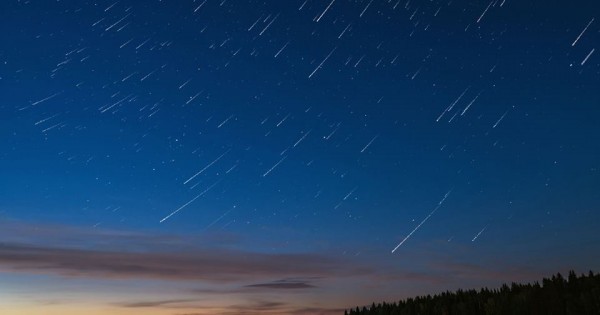Two Meteor Showers, Supermoon to Light Up the Sky Before 2016 Ends
| Theena Ocay | | Dec 05, 2016 09:14 PM EST |
(Photo : Facebook) Witness the Geminids and Ursids meteor showers light up the December sky.
Two meteor showers - the Geminds and the Ursids - are expected to light up the sky this month.
Before the year 2016 ends, people may witness Geminids showering the evening of Dec. 13 and the morning of Dec. 14. Meanwhile, the Ursids could be viewed best from the midnight of Dec. 21 until about 1 a.m. EST on Dec.22, just before the moon rises. The two meteor showers will also be active on Dec. 23 and 24.
Like Us on Facebook
Geminids Meteor Shower and Supermoon
Every year, people can observe the Geminids meteor shower between Dec. 4 and 17, with its peak activity being around Dec. 14, which is considered to be one of the most prolific meteor showers of the year.
According to NASA, stargazers can expect as many as 60 to 120 shooting stars per hour at peak times, and the views of the meteor shower are expected to be good on the nights before and after the peak.
The shower owes its name to the constellation Gemini from where the meteors seem to radiate from in the sky. However, the last Supermoon phenomenon for this year may outshine the Geminid meteor shower, yet the the brightest shooting stars should still be visible and will add to the spectacle.
Ursid Meteor Shower
The Ursids meteor shower runs from Dec. 17 to 23. It peaks in the predawn hours of Thursday, Dec. 22.
The shower's radiant is above the Little Dipper (Ursa Minor) near Polaris.
The Ursids are named after the constellation they appear to radiate from in the sky, in this case, Ursa Minor or the little bear. These meteors appear to shoot out from a region of the sky just above the bowl of the Little Dipper, the well-known star pattern that is part of Ursa Minor.
In Ursids, people can only expect an average of 10 to 15 shooting stars per hour, and on rare occasions, viewers will catch bursts of 30 or more an hour.
If you missed last year's Geminids and Ursids meteor showers and the Extra Supermoon last month, do not let your 2016 end this time without seeing the last two meteor showers and the last supermoon phenomenon for this year.
Tagsmeteors, Geminid Meteors Shower, Ursids Meteors Shower, supermoon, December 2016
©2015 Chinatopix All rights reserved. Do not reproduce without permission
EDITOR'S PICKS
-

Did the Trump administration just announce plans for a trade war with ‘hostile’ China and Russia?
-

US Senate passes Taiwan travel bill slammed by China
-

As Yan Sihong’s family grieves, here are other Chinese students who went missing abroad. Some have never been found
-

Beijing blasts Western critics who ‘smear China’ with the term sharp power
-

China Envoy Seeks to Defuse Tensions With U.S. as a Trade War Brews
-

Singapore's Deputy PM Provides Bitcoin Vote of Confidence Amid China's Blanket Bans
-

China warns investors over risks in overseas virtual currency trading
-

Chinese government most trustworthy: survey
-

Kashima Antlers On Course For Back-To-Back Titles
MOST POPULAR
LATEST NEWS
Zhou Yongkang: China's Former Security Chief Sentenced to Life in Prison

China's former Chief of the Ministry of Public Security, Zhou Yongkang, has been given a life sentence after he was found guilty of abusing his office, bribery and deliberately ... Full Article
TRENDING STORY

China Pork Prices Expected to Stabilize As The Supplies Recover

Elephone P9000 Smartphone is now on Sale on Amazon India

There's a Big Chance Cliffhangers Won't Still Be Resolved When Grey's Anatomy Season 13 Returns

Supreme Court Ruled on Samsung vs Apple Dispute for Patent Infringement

Microsoft Surface Pro 5 Rumors and Release Date: What is the Latest?










